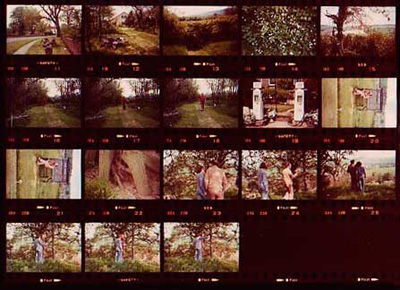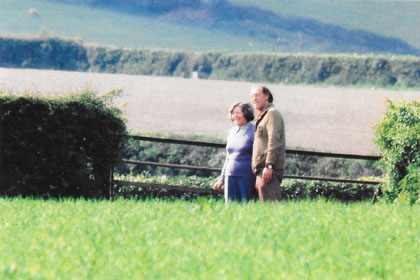The Country and The City (Where We Live Now)
1979 60’
This film formed part of “Where we Live Now”, a BBC2 series, made up of five separately directed one hour films, each presented by a different writer.
For several years I’d been wanting to make a film with Raymond Williams , but it was only in 1973, when I read his brilliant analysis of “The Country and The City” - as historically expressed in English literature and social thought - that I realised I’d found the right subject for a film. But it was to be another 6 years before I luckily found a place for it, in the BBC series “Where We Live Now”, for which the executive producer was Christopher Martin.
And, although I could now go ahead, it remained a challenging project to take on, given the density of the book on which it was based, and much research was still needed to find the best and most resonant locations, one of the most important being the right country house. And, while the historical importance of the country house and its associated literature was fully documented by Raymond, he had no single one in mind. And thus it was by chance that I discovered the perfect place, while driving to Cheshire on a family visit to my in-laws!
Tatton Park was a hitherto private property that was deliberately opening up its history to public gaze and thus an ideal hub around which Raymond and I could explore many themes from the book. Furthermore we were given the freedom to use, not only the house and its surrounding estate, but its many paintings and rich archive; as well as to film some of its outdoor events (particularly those celebrating old country pursuits, including sheep trials) as illustrative material with which to support many of the historical arguments and quotations we wanted to deploy.
Indeed Tatton was just 20 miles from Manchester and very near Knutsford, where Elisabeth Gaskell had lived. And it was clearly the house, a visit to which was vividly described in one of her novels, from which we were able to quote. Humphrey Repton (referred to by Jane Austen and satirised by TL Peacock) had designed the estate and ornate gardens, and the destruction of the local cottages needed to make this possible was explicit in Repton’s well preserved drawings at Tatton, along with fascinating earlier ground plans showing the transformation of this typical piece of English land over the centuries, culminating with the moment when it was ruthlessly ‘stolen’ by acts of enclosure, to the exclusive benefit of several generations of the Edgerton family that lived for decades in this ‘country’ house, built by money made in ‘the city’, and later sustained by profits from the industrialised new conurbations of Manchester and Liverpool, linked as they were by the ship canal, of which Lord Edgerton happened to be the chairman!
But the film begins where Raymond Williams himself was born and brought up, the Welsh valley near Pandy, which is also the landscape of his first novel “Border Country”. It then moves to other locations, including Cambridge, The Lake District, the Wye Valley, Farnham, Tatton, and of course London. And its many quotations range from Genesis to Oliver Goldsmith, John Clare to William Cobbett, Wordsworth and Dickens to Engels and T.S Eliot.
An extremely dense translation to film of Raymond Williams’ 1973 book of the same title which traces images of ‘nature’ and ‘town’ through 200 years of English literature. The connections Williams establishes as he traces the history of Tatton Park near Manchester - ‘an almost perfect example of how the English country house has influenced if not dominated our images of the country’ - are often startling and the film’s style continually illuminates the overall argument. All of the details taken from writers, painters, landscape artists and from 19th and 20th history of major urban centres are placed within a framework of class-based economic history - ‘the country and the city are parts of an interacting system dominated by a single class’- and the result is a unique TV essay. Michael Dibb, the director, has worked well with Williams to ensure that every image, every snatch of sound-track plays its part in the structure.
Time Out


